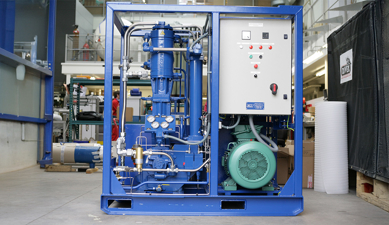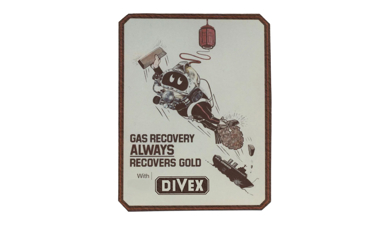Gas Management Systems
Within the demanding environment of a submarine, Divex Gas Recovery Systems can ensure optimal gas recovery and conservation, enhancing operational efficiency and viability.
The Divex systems capture and recycles exhaled gases, allowing for their efficient reuse within the closed loop environment. This not only enhances operational safety by maintaining precise gas mixtures but also supports extended dive durations by reducing overall gas consumption.
Engineered for high pressure conditions and proven as a trusted solution within the Commercial Saturation Diving industry since 1981, the Divex GasMizer Diver Gas Recovery System offers robust performance and reliability.
After more than four decades, the Divex Gasimizer remains the benchmark in the diving industry and continues to provide dive operators with huge savings on breathing gas costs.
An interesting history…
The Divex GasMizer was originally developed in 1981 when Jessop Marine was given the salvage rights to the wreck of HMS Edinburgh. Struck in 1942 during WW2 by two German torpedoes, 58 people lost their lives on board and the Captain then ordered the cruiser to be sunk by another British ship. What no one realised was that on board HMS Edinburgh was secretly carrying 465 gold bullions… a tale which became legend…
In 1981, diving company Wharton Williams Ltd took on a ‘no sure no pay’ contract which would become the deepest sustained commercial saturation dive of its time at 256m. The project cost was estimated at £3million and to make this viable, new technology was required to recycle the divers gas rather than bubbling away valuable Helium and Oxygen reserves.
On the project was Gas Services Offshore Ltd of Aberdeen, latterly becoming Divex and subsequently JFD Limited - established by ex-US Navy diver Don Rodocker who designed the Gasmizer Reclaim System. Don also equipped the diver helmets for gas recovery with British inventor, Alex Copson’s Helinaut valve to provide the first practical heliox recovery system (known today as the Divex Ultrajewel 601 helium reclaim).
The Gasmizer Reclaim System then used a gas booster water traps and CO2 scrubbing, to recover and store over 90% of the diver’s exhaled gas.
On 16 September 1981, the first gold bar was found by diver John Rossier. 460 of the 465 gold bars were recovered however 5 did go missing…!
This salvage operation undoubtedly changed the world of commercial SAT diving. The introduction of the Gasmizer Reclaim System was a major step forward providing dive operators with significant economical savings on gas and logistics. It also meant divers could spend longer in the water and work in deeper waters became more accessible.
The HMS Edinburgh bullion salvage was the first commercial use of gas reclaim systems, working fantastically throughout and shining a light on the huge commercial value of gas reclaim systems. The operation, which was the deepest-ever sustained diving operation of its type, would have been financially and logistically compromised without gas reclaim due to the volume of helium required to sustain the complexity and length of the dive operations.





 Read James Fisher and Sons plc's latest Annual Report
Read James Fisher and Sons plc's latest Annual Report